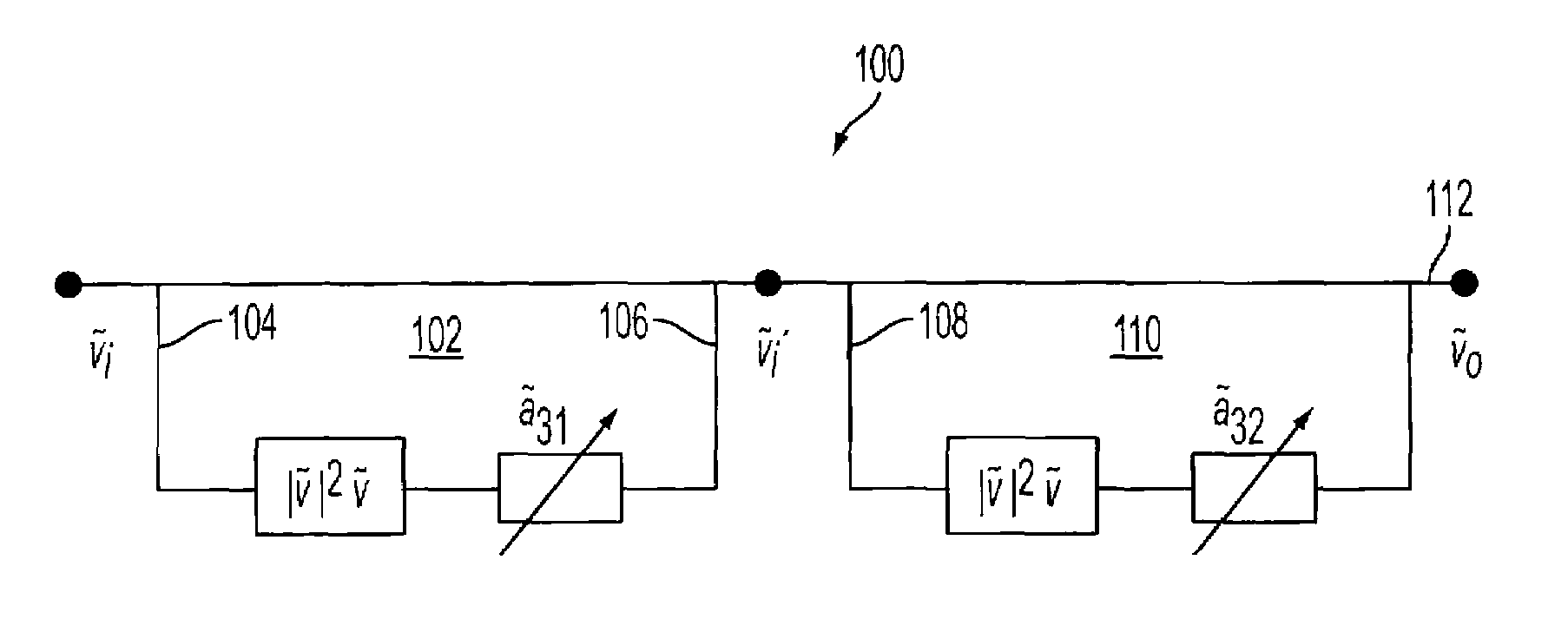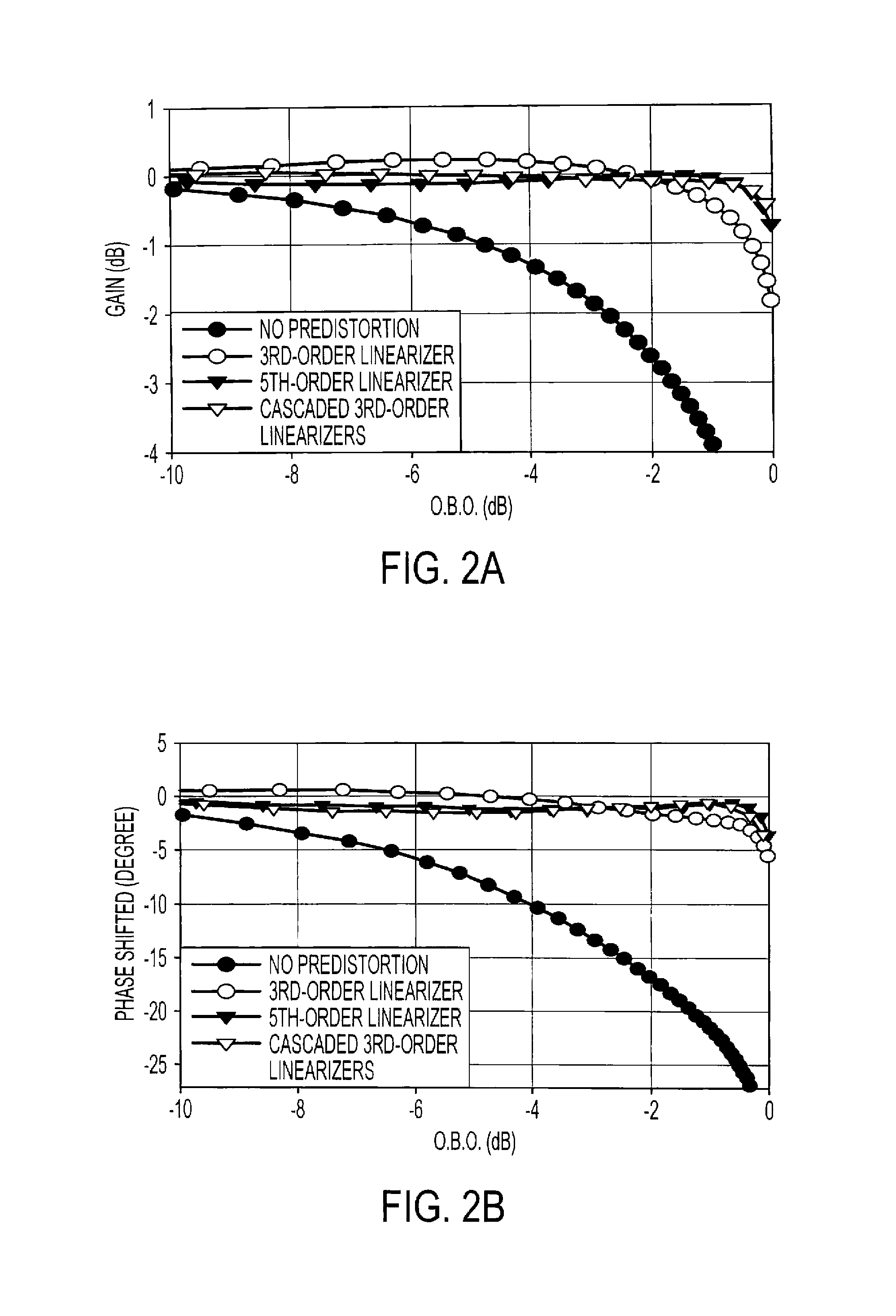Predistortion linearizer using cascaded lower-order linearizers
a technology of predistortion linearizer and cascaded linearizer, which is applied in the direction of amplifiers, amplifier modifications to reduce noise influence, transmission, etc., can solve the problem of the same order of complexity of constructing higher-order linearizers through cascaded third-order linearizers, and achieve the same performance, improve the linearity and efficiency of microwave power amplifiers, and simple and easy to realize
- Summary
- Abstract
- Description
- Claims
- Application Information
AI Technical Summary
Benefits of technology
Problems solved by technology
Method used
Image
Examples
Embodiment Construction
[0025]A baseband block model for a predistortion linearizer with both third- and fifth-order nonlinearities is shown in FIG. 1a. The output of the linearizer is given by,
{tilde over (v)}o={tilde over (v)}i+ã3|2{tilde over (v)}i+ã5|{tilde over (v)}i|4{tilde over (v)}i (4)
where {tilde over (v)}i and {tilde over (v)}o are complex input and output voltages, respectively, and ã3 and ã5 are the respective complex nonlinear coefficients. We note that a third-order linearizer can be realized with just the third-order term alone or it may also include the fifth-order terms. In the latter case, however, the fifth-order coefficient cannot be adjusted independent of the third-order coefficient. In the following discussions, we will assume for simplicity that a third-order linearizer is comprised of only the third-order term. A fifth-order linearizer can adjust both its third- and fifth-order coefficients independently.
[0026]Referring now to FIG. 1b, a predistortion linearizer 100 includes a fi...
PUM
 Login to View More
Login to View More Abstract
Description
Claims
Application Information
 Login to View More
Login to View More - R&D
- Intellectual Property
- Life Sciences
- Materials
- Tech Scout
- Unparalleled Data Quality
- Higher Quality Content
- 60% Fewer Hallucinations
Browse by: Latest US Patents, China's latest patents, Technical Efficacy Thesaurus, Application Domain, Technology Topic, Popular Technical Reports.
© 2025 PatSnap. All rights reserved.Legal|Privacy policy|Modern Slavery Act Transparency Statement|Sitemap|About US| Contact US: help@patsnap.com



